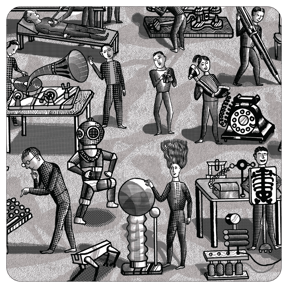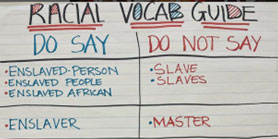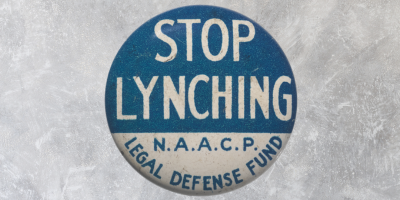Teaching Chain-Gang All-Stars in the Classroom
 Abigail Henry
·
5 minute read
Abigail Henry
·
5 minute read
As people invested in social studies education, what skills and understandings do we want our students to develop?
At Gibbs Smith Education, we use fact-based, culturally inclusive materials to help students develop a deeper understanding of the world. We want to help students be aware that people, politics, and history are complex and full of contradictions. And we want them to recognize systems of inequality, to feel empowered to raise awareness of them, and to be able to participate in a community to dismantle them.
These are all aspects of “critical consciousness," which is integral to the study of Black history. Last month, I had the opportunity to co-present at the Teaching Black History Conference in Buffalo, New York, with Abigail Henry. This conference is one of my favorites for my own personal learning. It is full of incredibly smart, talented, socially-minded people who share a common goal: to educate. In the following article, Abigail shares her approach to teaching a National Book Award fiction finalist that has particular relevance to these ideas. — Liz Wallace, Publisher, Gibbs Smith Education
 Teaching Chain-Gang All-Stars in the Classroom
Teaching Chain-Gang All-Stars in the Classroom
By Abigail Henry
I have a question for you: Do you think the following quote is from a story set in the past, present, or future?
You might be owned by a man, like I been. You might be owned by the state, like I was. Maybe the holding is your own voice taken and stripped from you. Your own body living under the eye of electric sizzle. Maybe that’s what owns you. Not wanting to be more owned.
What about this one?
We are at an impasse. America has the highest incarceration rate of any country in the world. We cling to the archaic and destructive practice of using death as a penalty for crime, when most countries have abolished the death penalty altogether. But rather than follow the lead of the rest of the world, we’ve gone in the exact opposite direction.
Answer: Both of these quotes are from a story set in the future, and they come from Nana Kwame Adjei-Brenyah’s Afrofuturistic novel Chain-Gang All-Stars. This fantastic novel reminded me how much I enjoy incorporating literature into my Black History classroom.
I remember watching my ninth graders once playing “Red Light, Green Light” at a community meeting. They had been inspired by the sinister version of the same game in the futuristic show Squid Game. As an African American History teacher, I have always been interested in the music and films that my West Philly students of color listen to and watch. It helps me find ways to make my teaching relevant to their lives and interests. So I went home and tried Squid Game. While I think I have an above-average tolerance for violence, I found the program difficult to watch.
One of my biggest critiques of the entertainment industry is the lack of fantasy and science-fiction stories that center Black stories. I frequently tell my students, “I cried when I first saw the Black Panther movie—I thought, ‘Why did I have to wait this long? How many Spiderman movies and TV shows had to be made prior to this movie that finally centered a Black protagonist?’”
This is why I loved reading, adapting, and teaching Nana Kwame Adjei-Brenyah’s Chain-Gang All-Stars to both my ninth-grade African American History and 12th-grade AP African American Studies students. This Afrofuturistic novel imagines a dystopian criminal justice system in which the prisoners may choose to participate in gladiator-like games. If they survive three years in the games, their sentences are commuted and participants are set free. Think Squid Game meets The Hunger Games, but with way more Black people.
Moreover, what makes this novel fantastic (and useful in the classroom) is the way the story explores many of the injustices of the US criminal justice system. In this world, Afrofuturistic companies profit from inmates’ death matches, where surveillance and controlling technology rule, and abuses such as solitary confinement for inmates are common. Adjei-Brenyah even based some of his fictional characters on actual Black victims of the justice system.
I have a vivid memory of teaching my post-Reconstruction unit, which is appropriately titled in the School District of Philadelphia’s historic African American History curriculum as “Domestic Terrorism.” During a lesson on the 13th Amendment and convict leasing, students were challenged to think deeply about the criminal justice system through a unit about Meek Mill. Along these lines, in the Chain-Gang All-Stars games, there is a character based on George Stinney. He was a 14-year-old wrongly accused and executed in South Carolina. There is also a character based on Alfred Woodfox, who only participates in the games to be released from solitary confinement.
Given the need to also cover my required curricula, it was not feasible to teach the entire novel to my students. Yet there are several excerpts from the novel in which students can gain valuable insights on historical injustices. Therefore, I selected key themes and passages from Chain-Gang All-Stars, accompanied by selected primary and secondary resources. What follows here traces the path I took to successfully teach parts of the novel in my classroom. In collaboration with Gibbs Smith Education, this material was also presented at the Teaching Black History Conference held at the University at Buffalo, with resources made available for educators.
Here is an overview of how Chain-Gang All-Stars could be taught in the classroom:
- First, start with quotes from the novel and ask students if they think the quotes are describing the past, present, or future. I separated the quotes on index cards and had students turn to each other and talk about them. Most students assumed the quotes were from the past or present. After this, I revealed that the quotes come from a story set in the future and facilitated a class discussion, asking them: “Do you think these quotes could describe our prison system in the future? Don’t you think it will be improved?”
- Next, explain what the story is about and who wrote it. Also, define Afrofuturism, and provide examples of it. A good starting point for this is Black Panther, a popular movie most high school students have likely watched.
- Following this, teach excerpts of the novel around key themes and related history and sources. Each day could be based on different themes or combinations of them.
There are many themes in the novel that can be used to analyze aspects of the criminal justice system. Four themes that I developed were America’s love of violence, the prison industrial complex, the dehumanization of Black bodies, and restorative justice. For each theme you choose, have students read an excerpt of the novel, and connect them with related primary and secondary resources and with appropriate discussion questions.
These are my reasons, suggestions, and explanations for each of my themes:
- America’s Love of Violence: In the novel, the games are broadcast on television, friends meet up for watch parties, and families even discuss the games at home. Some viewers are aware of this normalization of the extreme violence within the games, but they watch anyway. Appropriate excerpts from the novel could be paired with evaluating violence and football, the history of racism in football, and the popularity of Squid Game.
- Prison Industrial Complex: Throughout Chain-Gang All-Stars, companies profit from the inmates’ labor. We also see a subtheme of the negative impacts of capitalism because of the sponsorship of the prison system and its games by corporations similar to Walmart and Whole Foods.
- Dehumanization of Black Bodies: In this Afrofuturistic prison system, the dehumanization of Black bodies is common. Many of the characters experience physical and mental abuse. The language in which some of the spectators, hosts, and commentators talk about the Black fighters highlights how language is a tool of white supremacy. Teachers can combine excerpts with a reading of the US definition of torture and larger discussion of dehumanization.
- Restorative Justice: The complicity in which groups and individuals protect the entire criminal justice system is exposed throughout the novel, and the way the Black participants themselves perform at the games emphasizes systemic injustice. The manner in which we treat the incarcerated is a topic most high school students find engaging. There are many resources available on this theme, such as Bryan Steven’s discussion with public defender Patrice Moore and the Sentencing Project.
My final thoughts on Chain-Gang All-Stars are about the story’s characters and its violence. The two main characters of this novel are Lorretta Thurwar and Hurricane Staxx, two Black women who are also members of the LGBQTIA community. This novel centers their unique Black identities, providing an opening for teachers to discuss intersectionality.
I remember how my dad, who read the novel, reacted to me wanting to teach it: “No way, it’s too violent!” My response was that most students—through social media, entertainment, and the violence they experience themselves—can certainly handle this novel. America’s lasting love of violence is one of the awful echoes of slavery. Incorporating Chain-Gang All-Stars into the classroom opens the door for students to study our shared and complicated African American history.



